Popping Dance is a dynamic and visually striking street dance style rooted in the late 1960s and 70s. Characterized by its signature “hits” – sudden muscle contractions and releases in time with the music’s rhythm – popping dance creates a unique percussive and illusion-based movement vocabulary. Often mistakenly grouped with breakdancing, popping stands as a distinct art form with its own rich history, techniques, and cultural significance.
The Origins and Evolution of Popping Dance
Tracing the precise origins of dance styles can be complex, with varying accounts from original generation (OG) dancers based on their personal experiences and regional influences. However, it’s widely accepted that popping dance emerged from the urban, deindustrializing communities of California in the late 1960s and 70s.
In these environments, groups of teenagers sought creative outlets, developing unique movements and practicing them within their communities. Dance became more than just a hobby; it was a form of expression, community building, and identity formation. These early dancers innovated moves and techniques, eventually leading to the style we now recognize as popping. The term “Popping,” often used interchangeably with “hitting,” became the umbrella term for this evolving collection of movements and styles pioneered by these original innovators.
Essential Moves and Techniques in Popping Dance
Popping dance encompasses a diverse range of techniques, each contributing to its distinctive visual aesthetic. Here are some key foundational moves:
Animation
Inspired by the stop-motion animation of Ray Harryhausen’s Dynamation films, animation in popping seeks to mimic the movement of cartoon characters or inanimate objects coming to life. This technique relies on sharp, controlled muscle contractions to create the illusion of frame-by-frame motion, resulting in a captivating, almost surreal visual effect.
Boogaloo
Boogaloo Sam, a pivotal figure in popping history, invented the Boogaloo. This style is characterized by its fluidity and looseness, creating the impression of a boneless body. Boogaloo incorporates smooth, continuous circular rolls of various body parts – hips, knees, head – giving the dance a wavy, unrestrained quality.
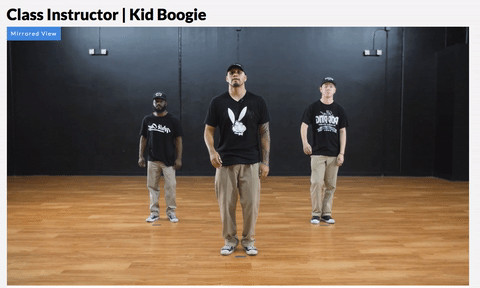 Boogaloo dance move
Boogaloo dance move
The Robot / Botting
The Robot, or Botting, is a classic popping style where dancers emulate the movements of robots or mannequins. This involves utilizing various popping techniques to create stiff, angular, and mechanical-looking motions. The robot dance is instantly recognizable and a popular element within popping performances.
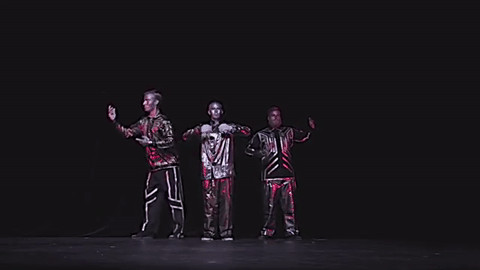 Robot dance move
Robot dance move
Dime Stop
The Dime Stop emphasizes precise and sudden halts in motion. Dancers move at a consistent pace and then come to a complete stop, instantaneously and without any lingering movement or shaking. This technique, named after the expression “stopping on a dime,” requires exceptional control and adds a dramatic element of surprise to popping.
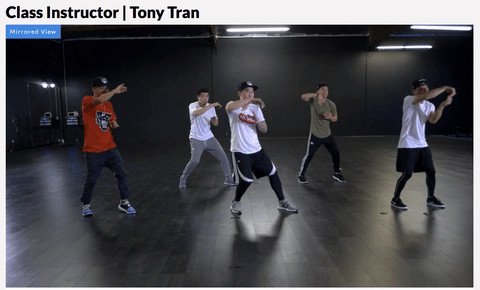 Dime Stop dance move
Dime Stop dance move
Gliding / Floating / Sliding
Gliding, Floating, or Sliding refers to footwork techniques that create the illusion of effortlessly smooth movement across the floor. The backslide, often mistakenly called the Moonwalk, is a prime example of gliding. These techniques rely on subtle foot movements and body control to produce a magical, frictionless effect.
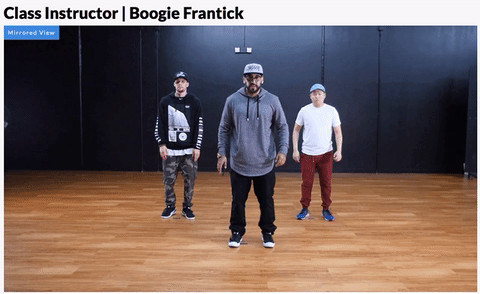 Gliding dance move
Gliding dance move
Hitting / Popping
Hitting, or Popping itself, is the core technique of the style. It involves rapidly contracting and releasing specific muscle groups to create a sharp “pop” or “hit” sensation throughout the body. These hits are executed rhythmically, often combined with poses and dynamic movement pathways, forming the foundation of popping’s visual texture.
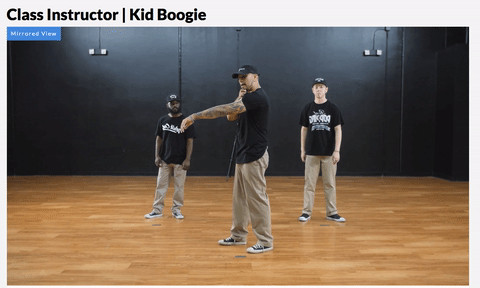 Hitting or Popping dance move
Hitting or Popping dance move
Isolation
Isolation is the ability to move one part of the body independently while keeping the rest of the body still and controlled. This technique is crucial for creating intricate and detailed movements in popping, allowing dancers to emphasize specific body parts and create visual interest.
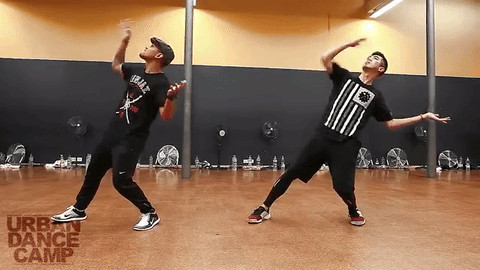 Isolation dance move
Isolation dance move
Miming
Miming in popping draws inspiration from classic mime artistry. It utilizes isolations and precise movements to create illusions of interacting with invisible objects or environments. Dancers use their bodies to depict objects, scenarios, and stories without any props, relying solely on their physical storytelling ability.
Scarecrow
The Scarecrow technique involves moving and hitting in a way that mimics a puppet or scarecrow controlled by strings attached to its joints. This style often incorporates jerky, angular movements and sudden stops, evoking the image of a loosely jointed figure being manipulated.
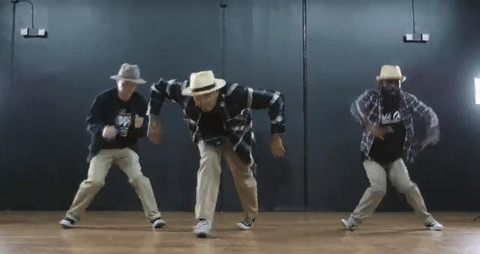 Scarecrow dance move
Scarecrow dance move
Snaking
Snaking refers to fluid, undulating rolls of the chest and body. This technique creates the impression of a snake-like motion, with full-body waves flowing smoothly from one part of the body to another. Snaking adds a sinuous and organic quality to popping.
Strobing
Strobing simulates the effect of a strobe light on the dancer’s movements. It involves quickly moving and stopping the body in rhythmic increments using dime stops. This creates a fragmented, stop-motion visual effect, as if the dancer is moving under a flashing light. Poppers often incorporate everyday movements like walking with strobing for a disorienting and captivating result.
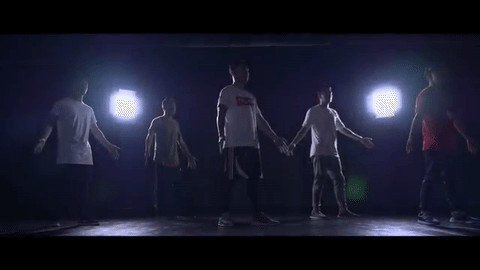 Strobing dance move
Strobing dance move
Strutting
Strutting originated in San Francisco and involves hitting sharp angles with the limbs while popping. This style emphasizes geometric shapes and precise, angular movements, combined with the signature popping hits, creating a visually sharp and defined aesthetic.
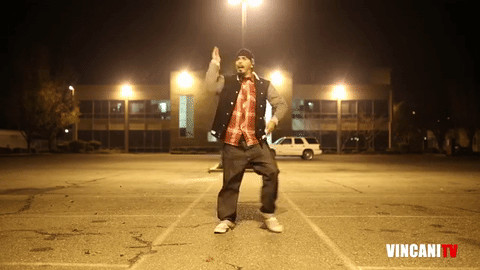 Strutting dance move
Strutting dance move
Ticking
Ticking is essentially a rapid series of hits executed in quick succession. Instead of continuous movement, the dancer breaks down a movement pathway into small segments and hits or pops at each point. Ticking creates a staccato, percussive rhythm within the movement.
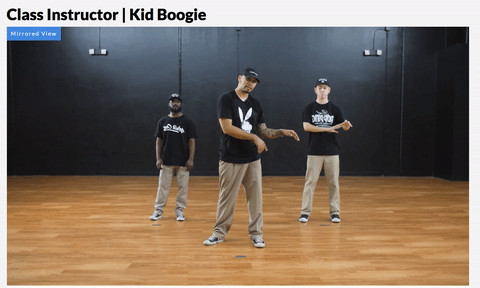 Ticking dance move
Ticking dance move
Waving
Waving involves creating fluid, continuous motions through the body or parts of the body that mimic the undulating movement of ocean waves. This technique requires smooth transitions and control to create seamless, flowing lines throughout the body.
.gif)
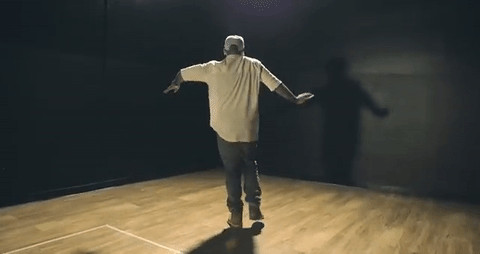 Waving dance move 2
Waving dance move 2
Tutting
Tutting, also known as “King Tut,” is inspired by the angular poses and shapes depicted in ancient Egyptian hieroglyphics. This style focuses on creating geometric shapes and patterns with body parts, primarily the arms and hands. Tutting emphasizes precision, angles, and intricate hand and arm configurations.
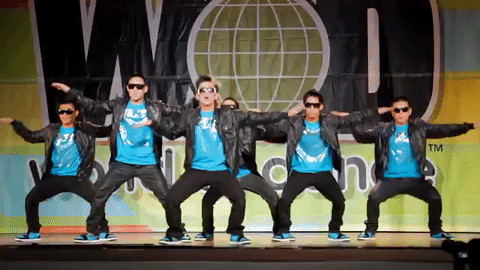 Tutting dance move
Tutting dance move
Pioneers of Popping Dance: The Electric Boogaloos and Beyond
Several key figures and crews were instrumental in shaping and popularizing popping dance.
Boogaloo Sam: The Innovator of Boogaloo
Sam Solomon, known as Boogaloo Sam, is credited with creating the Boogaloo style in 1975 in Fresno, California. Influenced by his brother Timothy Earl Solomon, Sam developed his unique dance style. In 1978, he moved to Long Beach, California, and formed the Electric Boogaloo Lockers (later known as the Electric Boogaloos) with other dancers.
Tick’n Will and Darnell Twist-o-Flex McDowell: Fresno’s Early Stylists
William Green Jr. (Tick’n Will) and Ricky Darnell “Twist-o-Flex” McDowell, friends from West Fresno, began developing their own dance moves in the 1970s. Initially calling themselves the Ace Tre Lockers, they focused on innovation and unique interpretations of existing moves. They didn’t initially categorize their dance as “Popping,” seeing it simply as “dance moves.” Will and Darnell developed variations of popping techniques, including Ticking, Creeping, and the Backslide. Their meeting with Sam Solomon in 1976 led to collaborations and eventually the formation of the Electric Boogaloo Lockers.
The Electric Boogaloos: Bringing Popping to the World
The Electric Boogaloos, formed from the convergence of these talented individuals, became the most influential popping crew. They gained recognition throughout Northern California for their originality and skill. Upon relocating to Southern California, they expanded their reach, recruiting new members and refining their techniques and performance routines.
Seeking wider exposure, The Electric Boogaloos performed on Hollywood streets. Their collaboration with Jeff Kutash in 1978 led to the “Jeff Kutash’s Dancin’ Machine featuring the Electric Boogaloo” tour, though the group later distanced themselves due to creative differences. Despite this, they continued to innovate and perform, developing signature fluid movements and body rolls.
The Electric Boogaloos achieved mainstream success with appearances on national television shows like Hot City, performances at the Chicago Playboy Club, and opening acts for musicians. Their pivotal appearance on Soul Train in 1979 introduced popping dance to a national audience, solidifying their legacy.
Popping Dance in Mainstream Media
Don Cornelius, in his Soul Train introduction of the Electric Boogaloos, recognized the rising popularity of this new dance style, describing it as “Popping.” Soul Train played a crucial role in popularizing popping dance across the United States.
The Electric Boogaloos’ performances inspired dancers nationwide and internationally, contributing to the development of diverse popping styles. Popping and other street dance styles gained further prominence through Hollywood films like Beat Street and Breakin’, showcasing the energy and artistry of the culture.
Bruno “Pop N’ Taco” Falcon’s appearance in Breakin’ and The Electric Boogaloos’ performances on Solid Gold further amplified the reach of street dance and popping. Although sometimes misrepresented in the media, these platforms played a vital role in bringing popping to the attention of a wider audience. Notably, Michael Jackson learned popping techniques from Pop’in Pete and Pop N’ Taco, and his performance of the backslide (incorrectly labeled the “Moonwalk”) in 1983 on national television further cemented street dance in popular culture.
Popping Dance Today
Popping dance remains a vibrant and evolving dance form. While related to hip hop and other funk styles like Waacking and Locking, it retains its distinct identity. Popping is actively practiced in battles, cyphers, and choreographed performances worldwide.
Contemporary poppers build upon the foundations laid by the OG generation, respecting the traditions and techniques while innovating and pushing the boundaries of the style. Understanding the history and origins of popping allows dancers to develop their own unique style while honoring the culture’s integrity.
Explore Popping Dance Further
To deepen your understanding and appreciation of popping dance, check out these resources:
- Interview with Pop’in Pete & Suga Pop: [Link to YouTube Interview if available]
- Beneath the Surface: An In-Depth Look at Popping & Boogaloo – PART 2: [Link to YouTube Video if available]
- Pop’in Pete Real Talk: [Link to YouTube Video if available]
Ready to learn popping dance? Explore the Popping program on STEEZY Studio with Boogie Frantick! You’ll learn foundational techniques like hitting, waving, isolation, and gliding.
Sign up for a free 7-day trial today!
Continue Exploring Dance:
- What is Jazz Dance
- How to Twerk
- How to Dance at a Club
- Hip hop Dance Moves
- What is Salsa
- What is Ballet


